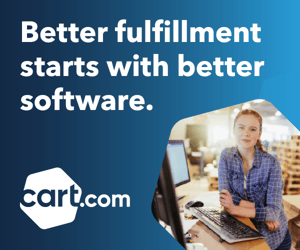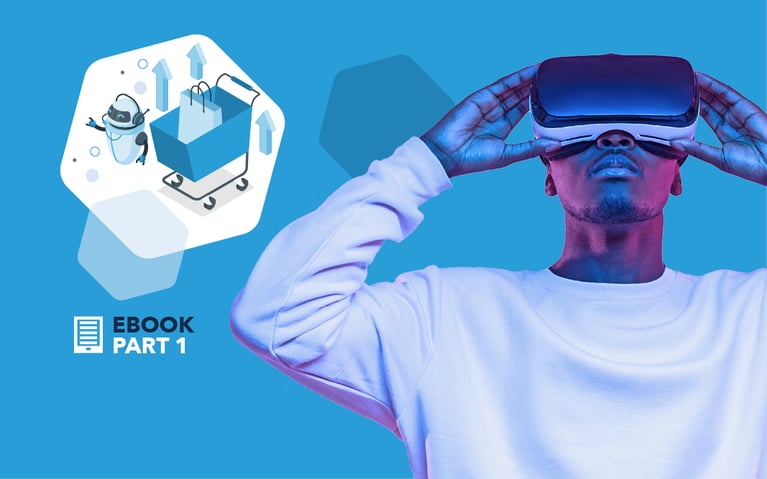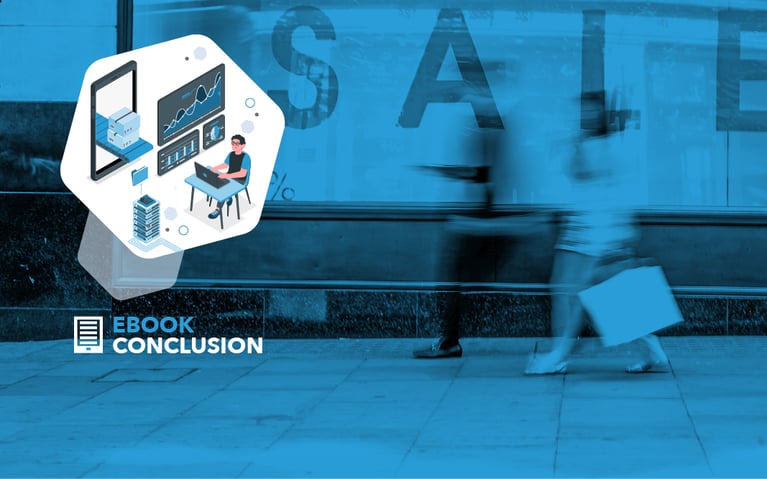In 2023, the recommerce market in the U.S. was worth more than $188 billion and is expected to reach close to $276 billion by 2028. The industry is growing as more consumers look to make eco-friendly choices. Brands like Crocs, Patagonia, Coach, Hanna Andersson, REI, TOM’s and IKEA all aim to reduce consumer waste through resale and recycling.
Younger generations are driving the recommerce trend: A survey found that 62% of Gen Z and Millennial shoppers prefer buying from sustainable brands. Not only do they view it as a way to participate in eco-conscious behavior but also gain access to higher-quality products that might not fit within their budget.
As recommerce grows, brands must consider its implications. How does it fit into their sales and marketing strategies, day-to-day business and fulfillment operations? Retailers looking to become part of the circular economy must understand what it is, how it works and craft measurable strategies around it.
What is recommerce?
Recommerce is selling previously owned, used or refurbished products through online and offline channels. It is part of the circular economy and emphasizes extending the lifecycle of products by reintroducing them into the market rather than disposing of them. Brands can implement their own recommerce program or partner with a recommerce platform like ThredUp, an online consignment and thrift store where consumers can buy and sell high-quality secondhand clothes. Several brands have partnered with ThredUp, including Madewell and their “Madewell Forever” program. These retailers aim to tap into ThredUp’s Resale-as-a-Service (RaaS) and create resale shops that feature the look and feel of the brand.
Recommerce is a huge draw for eco-conscious consumers. And the results of sustainability efforts are significant. For example, in 2022, eBay's recommerce resulted in 73,000 metric tons of consumer goods being re-used instead of ending up in landfills, along with 1.6 million metric tons of avoided carbon emissions. ThredUp found that when clothes are put back into rotation, there is an average carbon emissions reduction of 25%. Moreover, the recommerce industry is expected to grow, increasing in demand and engagement, particularly attracting the younger generations.
The circular economy vs recycling
The circular economy focuses on creating products that last several lifecycles. The goal is to avoid recycling. However, recycling is important in retail circularity, and brands benefit from finding ways to implement recycling programs that aim to minimize their waste and environmental impact.
How to create a recommerce program
Many brands that create recommerce programs name them. Naming your recommerce program gives it a distinct brand identity that can enhance customer recognition and loyalty. A unique and memorable program name also helps in marketing efforts, making it easier to communicate the program's value and benefits to consumers. To illustrate, example, Patagonia has the “Worn Wear” program, REI has “Re/Supply” and Hanna Andersson has “Hanna-Me-Downs.”
Implementing a recommerce program
Brands can effectively launch and manage a successful recommerce program by implementing the following strategies:
Trade-in incentives
Set up a seamless trade-in process where customers can bring their used products to physical stores or mail them in. Offer store credit or discounts as incentives to encourage participation. For example, Apple offers customers the option to trade in their old Apple devices in exchange for credit toward new purchases. This can be done either in-store or through their online platform.
Refurbishment and resale
Develop a refurbishment process where traded-in items are assessed for quality, repaired if necessary and cleaned. Create a dedicated section on your website or in stores for these refurbished products. Levi's inspects, cleans and repairs traded-in jeans and jackets before reselling them through their SecondHand platform. This ensures that all items meet quality standards before being reintroduced to the market.
Storytelling and brand loyalty
Collect and share stories of the traded-in items through your website, social media and marketing materials. This storytelling approach can highlight the sustainability journey of each product, increasing its perceived value and emotional appeal. As an example, Eileen Fisher's Renew program shares the stories of returned clothing items, highlighting the journey and impact of each piece. One social post highlighted the longevity of their clothes. It featured “The time traveler’s outfit” which featured pieces from the 1980s, 1990s and 2000s. This approach fosters a deeper connection with customers and enhances brand trust and loyalty.
Sustainability messaging
Emphasize the environmental benefits of recommerce in your marketing campaigns. Highlight how participating in the program helps reduce waste and conserve resources, appealing to environmentally conscious consumers. Quantify the results whenever possible, providing detailed statistics of how your brand has made a positive impact.
IKEA’s Buy Back & Resell service promotes sustainability by encouraging customers to return unwanted furniture in exchange for store credit. The returned items are then resold at discounted prices. Many clothing brands talk about keeping clothing out of landfills. Other retailers focus on reduced carbon emissions or protecting material resources.
Fulfillment’s role in recommerce
While it’s easy to focus on the front-facing part of the circular economy, there are other aspects that significantly impact retail operations. In particular, brands must look at how implementing a recommerce program impacts their fulfillment operations and logistics.
- Reverse logistics: Recommerce involves the return flow of goods from customers back to the company for refurbishment, resale or recycling. Companies need to establish efficient reverse logistics systems to handle the intake, processing and transportation of returned items. This includes developing processes for receiving, inspecting and sorting returned goods.
- Inventory management: Recommerce introduces additional inventory categories such as used, refurbished and resalable items. Fulfillment centers must adapt their inventory management systems to track and manage these new categories, ensuring accurate inventory counts and availability for resale.
- Quality control: Returned items need thorough inspection and refurbishment to meet quality standards before being resold. Implementing quality control processes within fulfillment operations is crucial. This includes setting up dedicated areas for inspection, cleaning and repair, as well as training staff to handle these tasks.
- Packaging and labeling: Refurbished items may require different packaging and labeling compared to new products. Fulfillment centers may need to develop packaging solutions that reflect the recommerce branding and sustainability messaging. This might include using recycled materials and distinctive labels indicating that items are refurbished.
- Storage Requirements: Storing returned and refurbished items may require additional space and specific storage conditions. Fulfillment centers must optimize storage layouts to accommodate these items, ensuring they are easily accessible for processing and shipping. This might involve creating separate storage zones for recommerce inventory.
- Shipping and handling: The shipping process for recommerce items might differ due to varying product conditions and customer expectations. Fulfillment centers must ensure that refurbished items are packaged securely to prevent damage during transit and that shipping labels accurately reflect the nature of the goods. Additionally, offering flexible shipping options can enhance customer satisfaction.
Addressing these impacts allows companies to streamline their fulfillment operations to efficiently and effectively manage recommerce activities, enhancing customer satisfaction and supporting sustainability goals.
The benefits of recommerce
The future of recommerce is bright – and is projected to grow faster than any other channel in the next 10 years. Even today, 2 in 5 items in Gen Z’s closet are secondhand and 1 in 3 apparel items bought in the last 12 months was secondhand. Brands that join the circular economy and offer recommerce experience numerous benefits, including:
- Environmental impact: By extending the lifecycle of products, recommerce significantly reduces the environmental footprint associated with manufacturing new items. This approach helps conserve natural resources, lower carbon emissions and minimize waste, contributing to a more sustainable business model.
- Customer loyalty: Offering trade-in programs and store credit through recommerce initiatives inspires strong customer loyalty and brand advocacy. Consumers appreciate the opportunity to return used items for credit, which they can use for future purchases. This encourages repeat business and boosts customer satisfaction.
- Market differentiation: Recommerce programs differentiate brands from their competitors by showcasing a commitment to sustainability and responsible consumption. Highlighting these efforts can attract environmentally conscious consumers who prioritize brands that align with their values, strengthening brand identity and market position.
- Economic benefits: The resale of used gear generates additional revenue streams while reducing costs associated with the production of new items. By tapping into the secondary market, companies can enhance profitability and optimize resource utilization. This also helps in managing inventory more efficiently and reducing overproduction risks.
- Elevated brand image: Promoting a recommerce initiative enhances a brand's image as a socially responsible and environmentally friendly company. This positive perception can attract new customers, retain existing ones and improve overall brand reputation.
- Circular economy participation: Recommerce aligns with the principles of the circular economy, where products are kept in use for as long as possible. This approach promotes a sustainable consumption model, reducing the strain on the environment and boosting long-term ecological benefits.
By leveraging recommerce, brands can contribute to environmental sustainability and gain economic advantages. It’s an excellent way to strengthen customer relationships and stand out competitively.
Join the circular economy
Cart.com offers brands a full suite of commerce and fulfillment solutions. From meeting your recommerce logistics needs to developing a recommerce growth marketing strategy, our team can help you get started in the circular economy. Contact us for more information today.
Subscribe to our emails for the latest industry insights!
By entering your email, you agree to receive marketing emails from Cart.com








